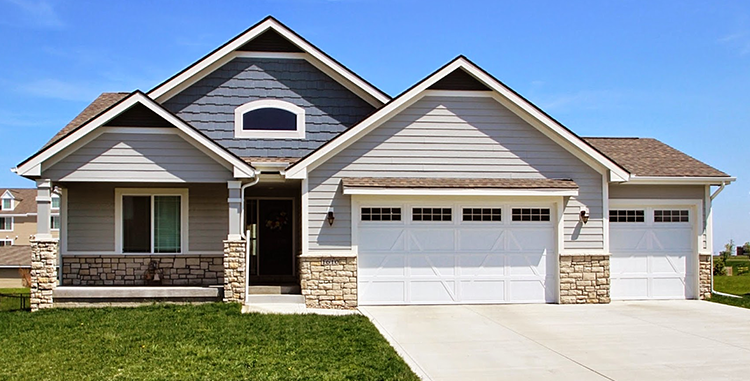You probably don’t think about how your garage door operates unless something goes wrong and you have to diagnose the problem. By understanding how the different components of your garage door system work together, however, you’ll be better equipped to deal with any problems as they arise. In basic terms, here’s how your garage door opener works.
Types of Operators
Two of the most common types of operators are chain-drive and belt-drive operators. Chain-drive operators are popular due to their affordability, but they can be very loud and shake while operating. Belt-drive operators are quieter but more expensive. Another option is the screw-drive operator. It falls in between the chain and belt for the price but is the loudest of the three.
Rail
The rail (or track) is what the rollers roll in when the door moves up and down. It connects the operator to the trolley (which is connected to the door). The trolley travels along the rail, guiding the door as it moves.
Springs
The garage door operates through a counterbalance system where a force offsets the weight of the door. The spring system is the key component; its tension helps balance the weight of the door to take pressure off the motor. There needs to be the right amount of tension in the springs, or the door won’t operate properly; if there’s too much tension, it will be hard to close, and if there’s too little tension, it will be difficult to open.
If the spring breaks, the motor is forced to do all the work itself and can quickly become damaged or break down due to overexertion. The torsion spring (used in most garage door systems) does the hard work, lifting your heavy garage door off the ground every time you use it. It is positioned horizontally above the garage door.
Cables
The cables are lifted and lowered by a pulley system. They’re connected to a drum at the top of the door, which they wind around as the door opens. Cables are connected to the bottom of the garage door and assist in the lifting and lowering of the door in motion.
Motor
The motor provides the energy required to pull the door up and slow its descent (so it doesn’t crash to the ground). Most garage door openers have motors with a minimum of ½ horsepower.
Power
Motors are powered by a standard home electrical outlet and run either on alternating current (AC) or direct current (DC). DC-powered motors convert AC to DC. DC motors are smaller, quieter, operate more smoothly overall, and sometimes include battery backups so you can operate your garage door during a power outage.
The garage door operation process is not a simple one, but knowing even a little bit about how your door and opener work will help you remain aware of their condition. If something seems like it’s not operating smoothly or correctly, call a professional garage door technician to inspect your system and make any necessary repairs. Don’t attempt to make repairs on your own when a 200–300-pound door is involved.
WD Door serves customers across the state of Iowa. If you’re interested in garage door installation or repair, give us a call or ask us for a quote!

